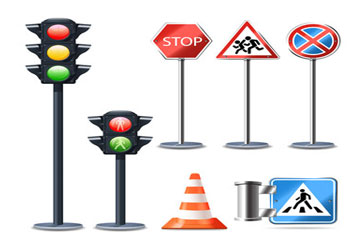When we travel across borders, one of the first things we notice is how roads are marked and managed differently. From the familiar red stop sign to unique country-specific symbols, traffic signs, signals, and road markings not only ensure safety but also reflect cultural and regulatory variations. This visual guide explores how countries around the world design their road communication systems.
Why Traffic Signs and Markings Matter
Roads are a universal language, but each country has its own dialect. Traffic signs, signals, and markings serve three main purposes:
- Safety: Preventing accidents through clear warnings.
- Efficiency: Regulating the flow of vehicles and pedestrians.
- Consistency: Providing drivers with predictable cues, even in unfamiliar environments.

Common Global Standards
While designs may differ, international agreements like the Vienna Convention on Road Signs and Signals (1968) have helped unify certain symbols. Many countries use:
- Red circles for prohibitions.
- Triangles for warnings.
- Rectangles and squares for information.
Still, regional differences remain fascinating.
Traffic Signs Around the World
United States
- Stop Sign: Iconic red octagon with “STOP.”
- Speed Limit: White rectangle with black lettering.
- Unique Feature: Text-heavy signs like “No U-Turn” or “Yield to Pedestrians.”
United Kingdom
- Stop Sign: Same red octagon but rarer compared to U.S. usage.
- Speed Limit: White circle with a red border and number inside.
- Unique Feature: The word “Give Way” instead of “Yield.”
Japan
- Stop Sign: Red inverted triangle with Japanese characters (止まれ).
- Speed Limit: Blue circle with white numbers.
- Unique Feature: Cartoon-like illustrations for hazards, such as deer crossing.
Germany
- Stop Sign: Standard red octagon.
- Speed Limit: White circle with red outline and black digits.
- Unique Feature: No general speed limit on certain Autobahn stretches.
India
- Stop Sign: Standard octagon with “STOP.”
- Speed Limit: Circular with black digits on white background and red border.
- Unique Feature: Painted slogans like “Horn OK Please” on highways, acting as informal road communication.
Traffic Signals by Country
- Standard System: Red (stop), yellow (caution), green (go).
- United States: Horizontal and vertical variations; flashing red acts as a stop sign.
- Europe: Commonly vertical signals with red on top. Some countries (e.g., Germany) briefly light red and yellow together before green.
- Japan: Green lights appear as blue-green, often referred to as “blue.”
Road Markings Across Borders
- United States: Yellow lines divide traffic, white separates lanes in the same direction.
- UK: White lines dominate; yellow markings mostly for parking restrictions.
- Australia: Features “Give Way” triangles painted on the road.
- India: Road markings are often faded but include zebra crossings, speed-breaker warnings, and large directional arrows.
Cultural Insights
Traffic systems reveal more than just rules—they reflect cultural driving habits:
- Precision in Germany ensures discipline on high-speed roads.
- Text-heavy signs in the U.S. show a preference for clarity over minimalism.
- Symbolic and colorful signs in Japan emphasize visual communication.
- India’s flexible approach shows adaptability in a mixed-traffic ecosystem.
Final Thoughts
Whether you’re a local commuter or a globetrotting driver, understanding traffic signs, signals, and road markings is essential for safety. They may differ in design, language, and style, but their ultimate goal is the same: keeping people safe and traffic flowing.
Next time you travel abroad, pay attention to the unique way a country designs its roads—you’ll learn a lot about its culture and priorities just by looking at the signs beneath the streetlights.
